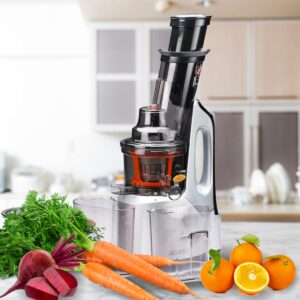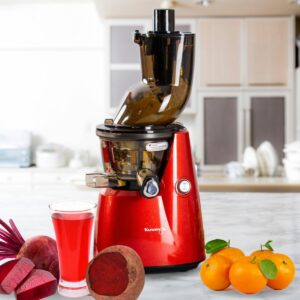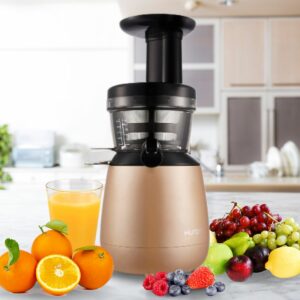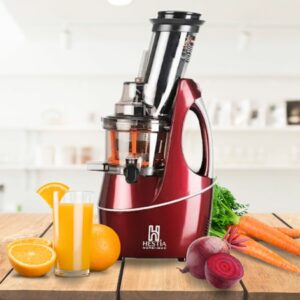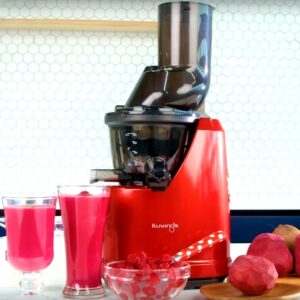Cold Press Juicer– Everything You Need to Know
What Is A Cold Press Juicer?
Also known as slow juicers, cold press juicers are the most efficient juicers in the market. Cold press juicers extract juice from fruits and vegetables by crushing them with an auger at slow speed and then pressing the thick mixture to maximize juice extraction.
No heat is generated or applied to the juice, which explains the term “cold” in cold press juicers. Cold press juicer is the healthiest choice for juice lovers, as the juice extracted in this device has a longer shelf life and is rich with vitamins and enzymes.
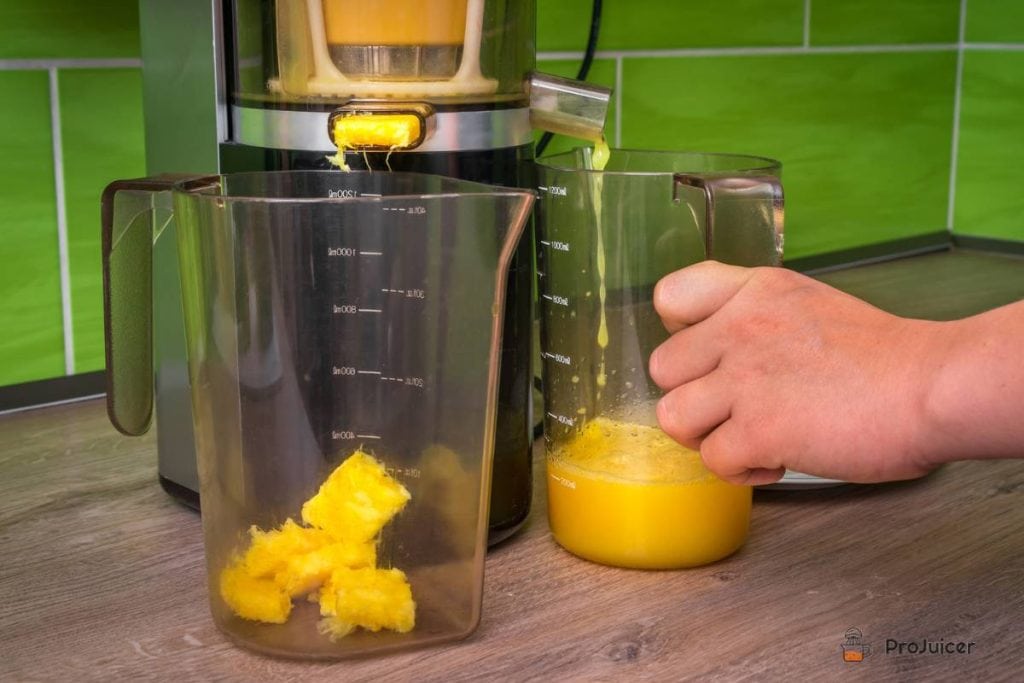
How Does A Cold Press Juicer Work?
This juicing process in a cold press juicer is very different from the traditional process. Conventional juicers, such as centrifugal juicers, extract the juice by grinding the fruits or vegetables and spinning them at high speeds. The spinning motion separates the liquids from the solids, after which the juice gets heated and pasteurized to kill bacteria.
On the other hand, a cold press slow juicer extracts juice in two stages. The fruits and veggies are crushed to a pulp during the first stage. The second stage involves applying immense pressure on the pulp to extract the juice.
There is a filtration system that separates the juice from the solid pulp. The high pressure during the juicing process and the refrigeration after bottling prevents bacterial growth.
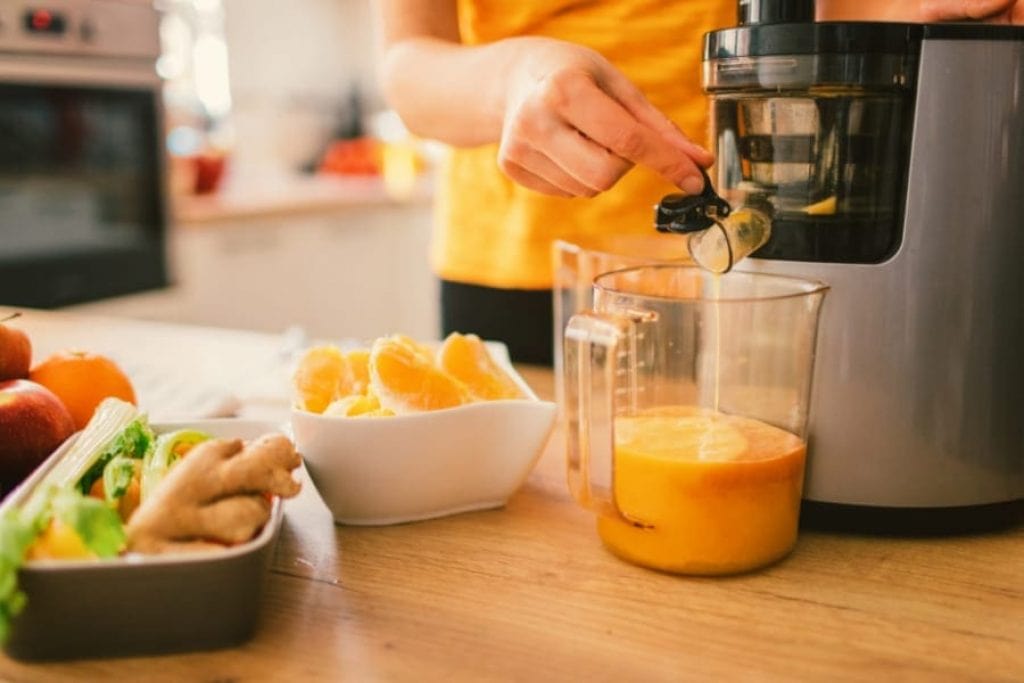
The best cold press juicers are perfect for efficiently extracting fruit and vegetable juices, which has helped them gain popularity among fitness freaks. Like any other juicer, cold press juicers also have benefits and drawbacks.
Advantages Of Cold Press Juicer
1. It Preserves More Nutritional Value
This is one of the most significant advantages of cold press juicers and the reason why they are so popular among fitness enthusiasts. Cold-pressed juice extracted using such a slow juicer is more nutritious than the juice from conventional juicers.
Not only do cold press juicers extract all the nutrients efficiently, but the traditional juicing process also destroys essential vitamins and minerals. As cold pressing doesn’t involve pasteurization, the juice retains its nutritional value and is thus healthier.
2. Longer Shelf Life
As mentioned earlier, cold-pressed juice has a much longer shelf life. The conventional juicing process oxidizes the juice, significantly reducing its shelf life unless special preservatives are added. Juice extracted using a conventional juicer would last only up to a day under refrigeration.
On the other hand, you can store cold pressed juice for three to five days in the fridge without any issues. This is an excellent advantage for those who prefer to make their juice in bulk and store it later.
3. Quiet Operation
Another major advantage of a cold press juicer is that it isn’t as noisy as a centrifugal juicer. The grinding and spinning processes in centrifugal juicers generate very high noise levels.
Such noisy performance can be pretty distracting and unpleasant to anyone at home. However, as a cold press juicer works on a completely different mechanism, it operates much more quietly.
4. Greater Consistency In Juice
Even the texture of cold-pressed juice is much better than juice extracted using a conventional juicer. As a cold press juicer doesn’t break down the produce like a conventional juicer, the juice retains significantly more pulp and fiber. A thicker juice feels not only feels better to drink but is also healthier. In case you prefer it thinner, you can just dilute it with water.
5. Cold-pressed Juice Tastes Better
Cold pressed juice tastes better than others due to its pulpy nature and greater retention of the ingredients. Together with the high consistency and more nutritional value, this ensures better juice quality. Even if you drink your cold pressed juice after a few days, it tastes fresh and rich.
6. A Large Variety Of Juices
Cold press juicers can also extract juices from various ingredients than other juicers. This is because, they are good for juicing leafy greens and can handle nuts and seeds.
A slow juicer can also be used to extract nut milk, oat milk, nut oil, soil milk, and healthy vegetable juices. This opens up a much wider range of applications. This is a great reason to buy a cold press juicer if you are looking for a versatile juicer.
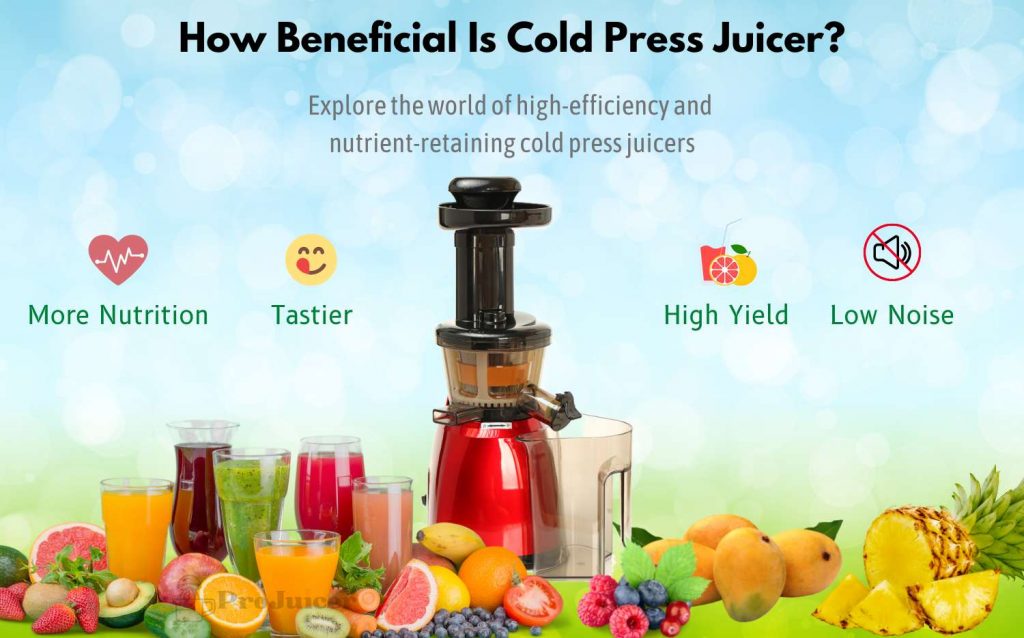
Disadvantages Of Cold Press Juicer
1. Cold Press Juicers Are Pricey
Alongside being the best type of juicer on the market, cold press juicers are also the most expensive. While this isn’t unusual, considering the perks of a cold press juicer and its technology, these juicers may not be budget-friendly for every buyer.
A good quality cold press juicer costs in the range from ₹10000 to ₹40000. But, while this juicer is pricey, the juicing performance and quality make it value for money. Check the cold press juicer price list to get the latest update.
2. Slow Functioning
A cold press juicer works much slower than a centrifugal juicer. This is because a centrifugal juicer uses rapidly spinning blades to extract the juice, while a cold press slow juicer gradually applies pressure. It would take you longer to extract the juice using the latter.
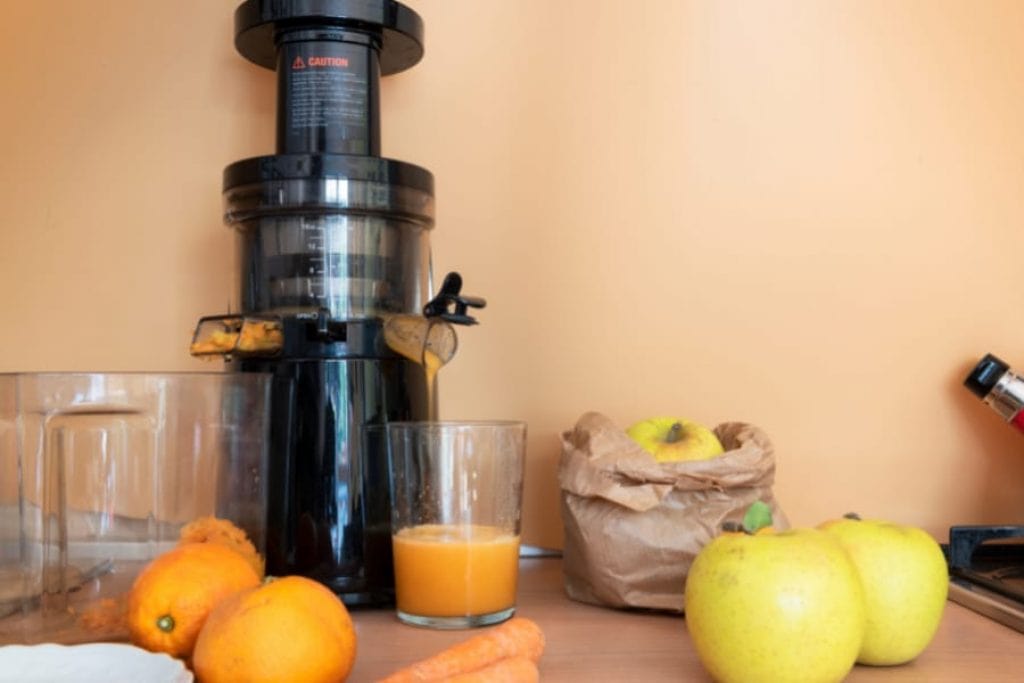
Top-Rated Cold Press Juicers
Parts Of A Cold Press Juicer
Base
This is the heavy part at the bottom of the juicer. It contains the motor and other electrical components crucial to the functioning of the juicer. The base of a cold press juicer remains stable with the help of the anti-skid bottom.
Juice Outlet
Located at the side of the juicing bowl, this outlet is where the juice comes out from. It may have a cap attached to hold the juice or smoothie until you want to pour it out. Some cold press juicers also have a detachable juice pitcher where all the juice collects.
Juicing Bowl
This is the component inside which the ingredients are crushed, and the juice is extracted. The juicing bowl is a tall container, usually with a transparent body. The capacity of the juicing container varies from one juicer to another, determining how much juice you can make per batch.
Auger
This large gear-like component slowly chews into the fruits and crushes them to extract the juice. It turns at a slow speed of around 40 to 100 RPM but delivers enough pressure to extract the maximum amount of juice possible.
Feeding Tube
The feeding tube is a tube located at the top of the juicer to send in the fruits, vegetables, or whatever you want to juice. The diameter of the feeding tube varies from one juicer to another, and you may have to cut the ingredients into smaller pieces if the tube is small.
Pusher
This component goes inside the feeding tube from the top and allows you to push the juice into the juicing bowl. It’s beneficial when sending in large chunks of fruits and veggies that might get stuck and jam the feeding tube.
Juice And Pulp Containers
As you might guess from the name of these components, they are containers to collect the juice and pulp leftover. Once the juicer separates the juice from the pulp inside the juice container, it deposits the leftover in the pulp container which you can use for various purposes. The larger the size of the containers, the more juice you can extract before having to stop and empty it.
Strainers
Cold press juicers usually come with multiple strainers, such as coarse strainers and fine strainers, to make juice, smoothie, and sorbet. As the name indicates, the purpose of the filters is to help separate the liquids from the solids.
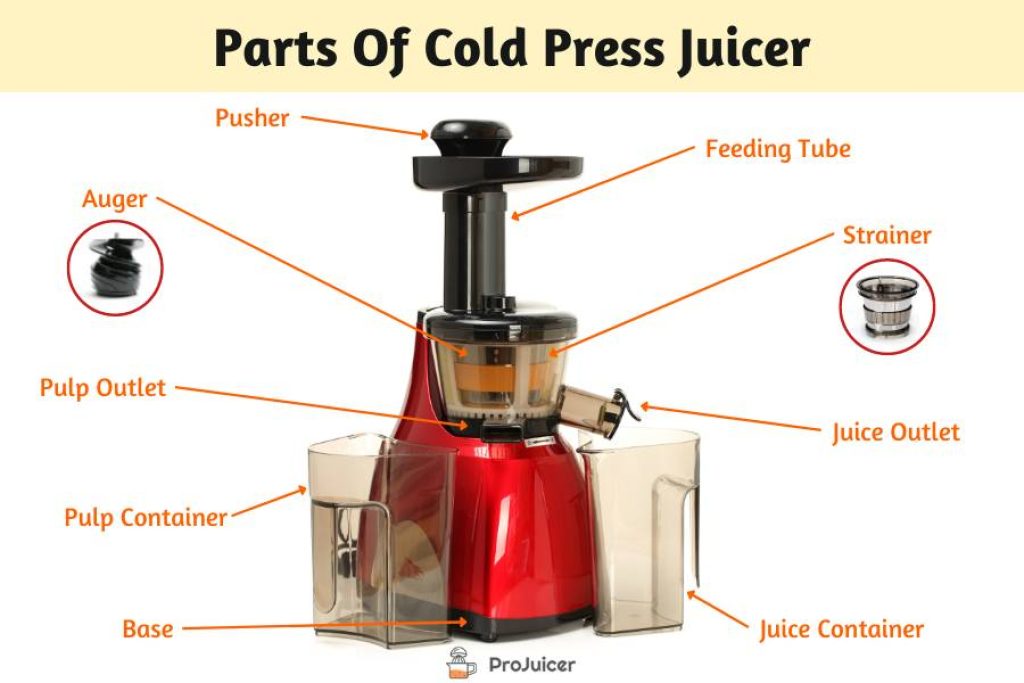
How To Use A Cold Press Juicer?
A cold press juicer can prepare juices from various fruits and vegetables like oranges, apples, watermelons, pomegranate, pineapple, mango, gooseberry, leafy greens, carrot and beetroots. Now that you know how a cold press juicer works let’s check out how to use one.
Step 1: Start by assembling different components of the juicer. Attach the juicing bowl on top of the base and insert the strainers. The feeding tube usually forms the top part.
Step 2: Now that you have set up your cold press juicer, it’s time to send in the ingredients. Put the fruits, veggies, or nuts in the feeding tube. Cut big fruits into smaller pieces to make them fit in the tube.
Step 3: Place a container under the juice spout once the ingredients are in. If the juicer doesn’t have a pulp container integrated into it, you will also have to place a container under the pulp outlet.
Step 4: You can now turn on the juicer. In addition to the basic turn-on and turn-off functions, some juicers may also come with additional functions like speed control and reverse motion.
Step 5: As the appliance extracts pulps, the juice will flow out of the outlet pipe. Some cold press juicers also have a cap on the spout to keep the juice inside until you wish to pour it out. This is especially helpful when making smoothies.
Watch the following video to learn more about using a cold press juicer in a proper way.
Is A Cold Press Juicer Better Than Other Types Of Juicers?
Well, a cold press juicer evidently has its advantages over other juicers like centrifugal or citrus juicer. Better juice quality, greater yield, and quiet performance are perks that you can’t overlook.
A cold press slow juicer will be a great choice if you are looking for the best juicer, regardless of the price. Overall, cold press juicers are most preferable as you don’t mind the price tag and the cleaning difficulties.
While cold press juicers are indeed great, whether you should buy them depends entirely on your requirements and preferences. If you are looking for a pocket-friendly juicer, you will have a hard time finding a good cold press juicer that fits your budget.
However, the healthier, tastier, and thicker juice produced by cold press juicers makes them worth their price. Also, if you don’t have the time to make fresh juice every day, cold press juicers are your best choice due to their longer shelf life.

